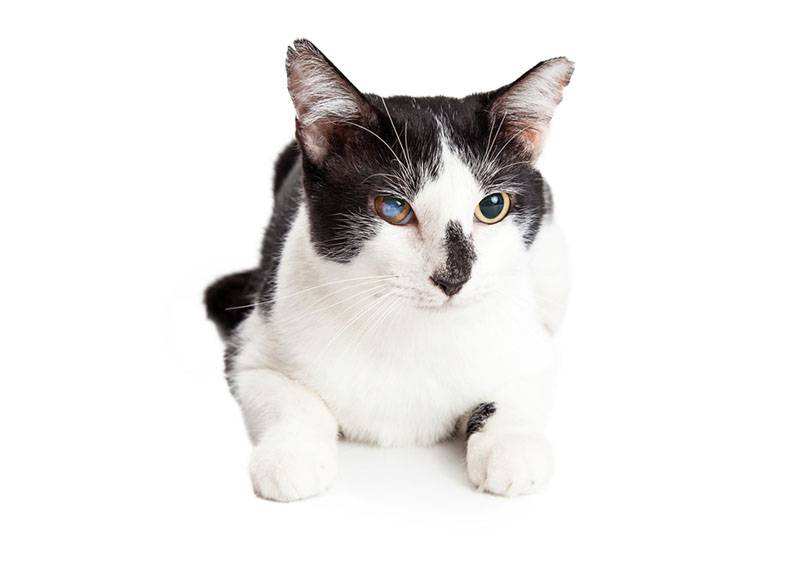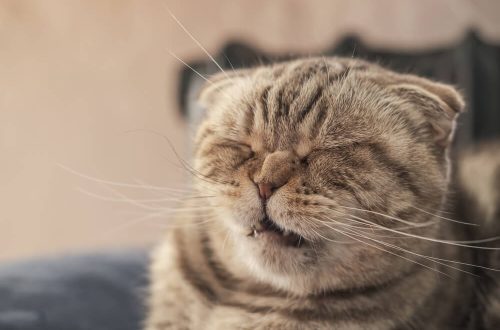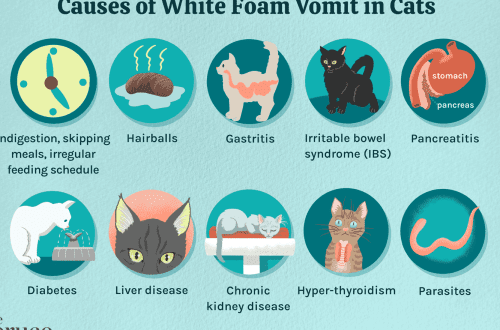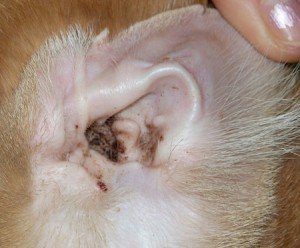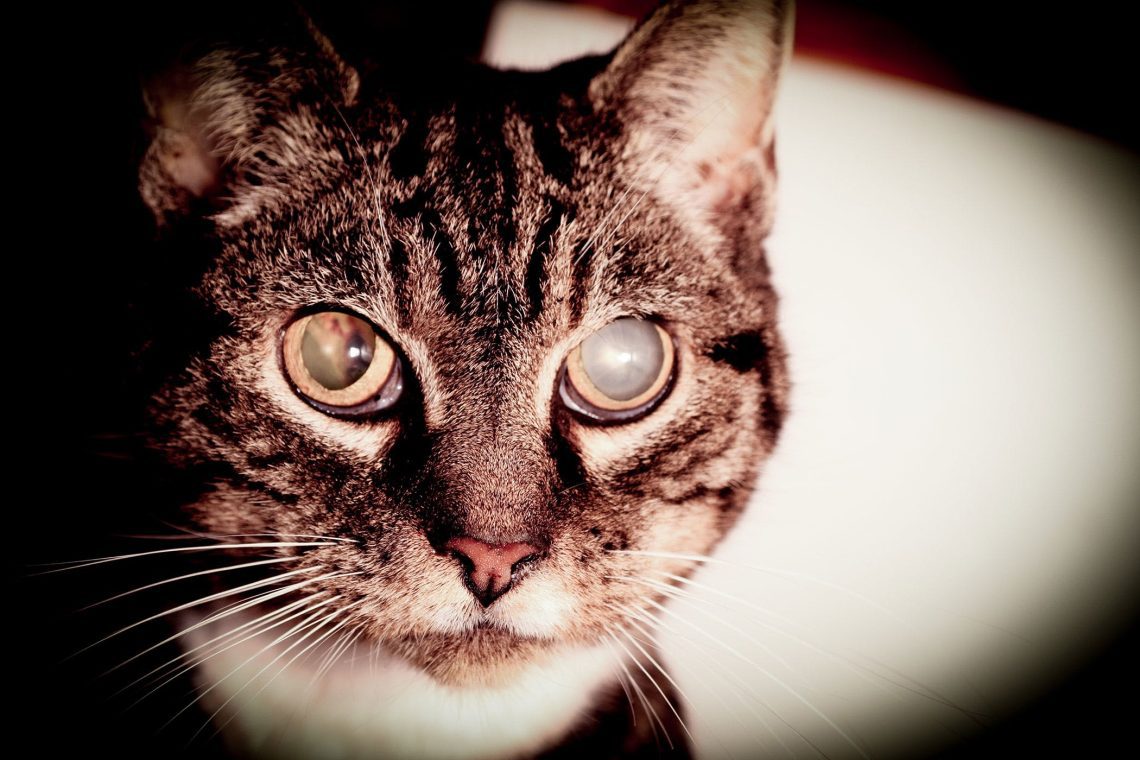
Cataracts in cats – symptoms and treatment
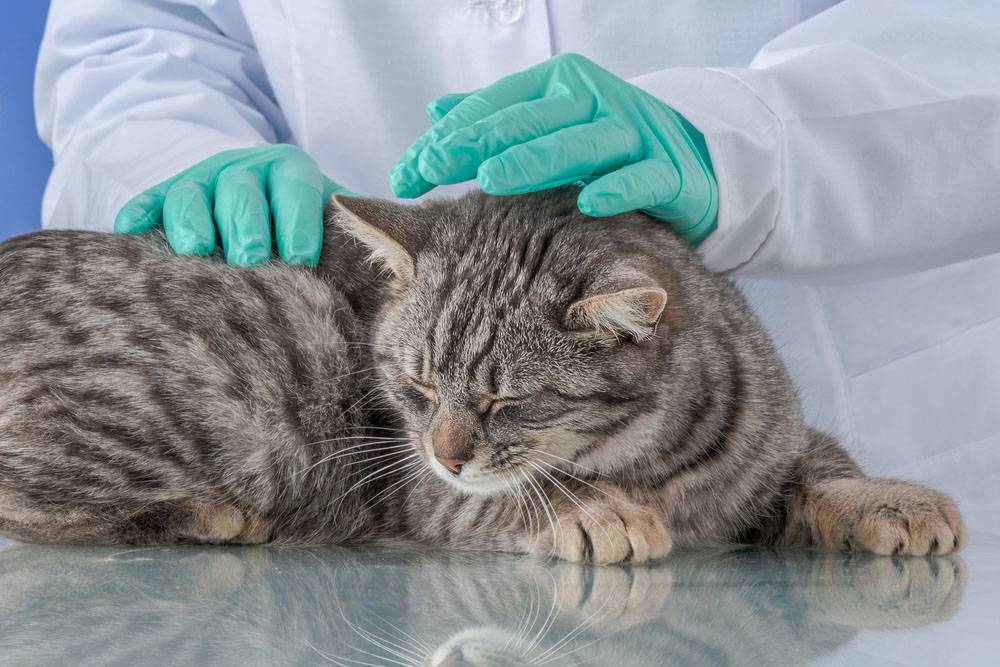
Contents
Causes of cataract development
The reasons for the development of the disease are diverse. We will look at the main ones:
Mechanical eye injury. Cats are curious and active animals. They may fall unsuccessfully when trying to jump somewhere, or they may get something in the eye, which will cause injury to the eye and swelling of its structures, including the lens. Swelling of the lens with its subsequent dehydration triggers the mechanism of cataract development. It is important to note that cataracts in one eye in cats are most often characteristic of trauma.
Metabolic disease. In old age, mineral metabolism is disturbed in animals, which leads to a decrease in the amount of fluid in the lens, which leads to the accumulation of fatty and protein elements on its surface.
Also, phosphorus and calcium salts can accumulate on the surface of the lens, which also provoke clouding. This often happens with urolithiasis.
Hormonal disorders can also secondarily provoke a violation of the structure of the lens. Diabetes,
Cushing’s syndromeIncreased secretion of cortisol by the adrenal cortex – endocrine diseases leading to a serious disruption of hormone production and metabolism.
Инфекции. Viral infections such as
viral rhinotracheitisViral disease of cats from the herpesvirus familyand parasitic diseases such as toxoplasmosisParasitic animal disease caused by toxoplasma or toxocarosisHelminth invasion caused by helminths from the group of nematodes, can also affect the organs of vision and give complications in the form of cataracts in a cat. In infectious diseases, both eyes are usually affected. If a cat is infected during pregnancy, kittens may be born with a damaged eye lens. This type of cataract is called congenital.
Genetic predisposition. Cats with a brachycephalic structure of the skull are prone. These are British, Exotic, Persian, Scottish and Himalayan breeds.
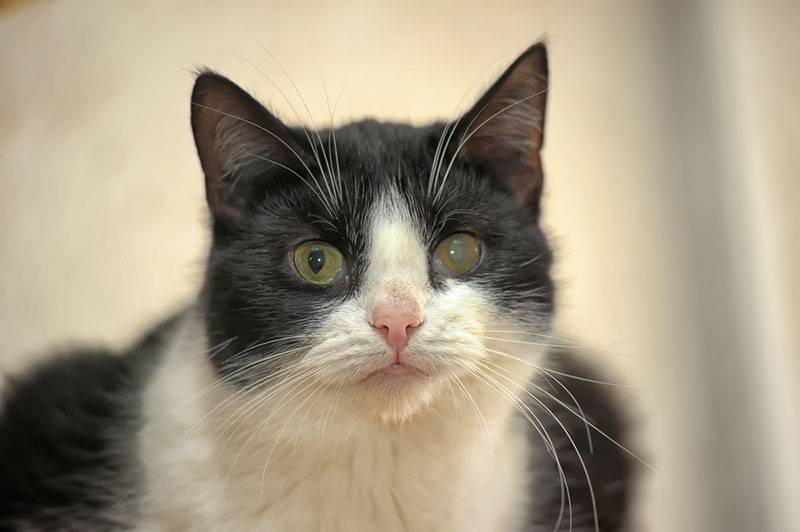
Cataract Symptoms in Cats
Symptoms of eye cataract in a cat depend on the stage of development of the pathological process. In total there are four stages of the disease:
1 stage – initial – only the periphery of the lens becomes cloudy. Vision is preserved, but the picture is fuzzy.
2 stage – immature – the lens becomes cloudy unevenly – on the sides, in the middle. Vision is preserved, but falls.
3 stage – mature – the cat’s eyes become completely cloudy. Orientation in space in a familiar environment is preserved, but in an unfamiliar room the animal is lost and is not able to distinguish between individual objects.
4 stage – overripe – the fibers of the lens are destroyed and its individual structures are also destroyed. The animal ceases to see and navigate in space, even in a familiar place.
Unfortunately, it is difficult for the owner to suspect cataracts at the initial stage, because the pet compensates for small visual impairments with hearing and smell.
Often, owners notice something is wrong when visual function is lost, and the lens of the eye is severely damaged.
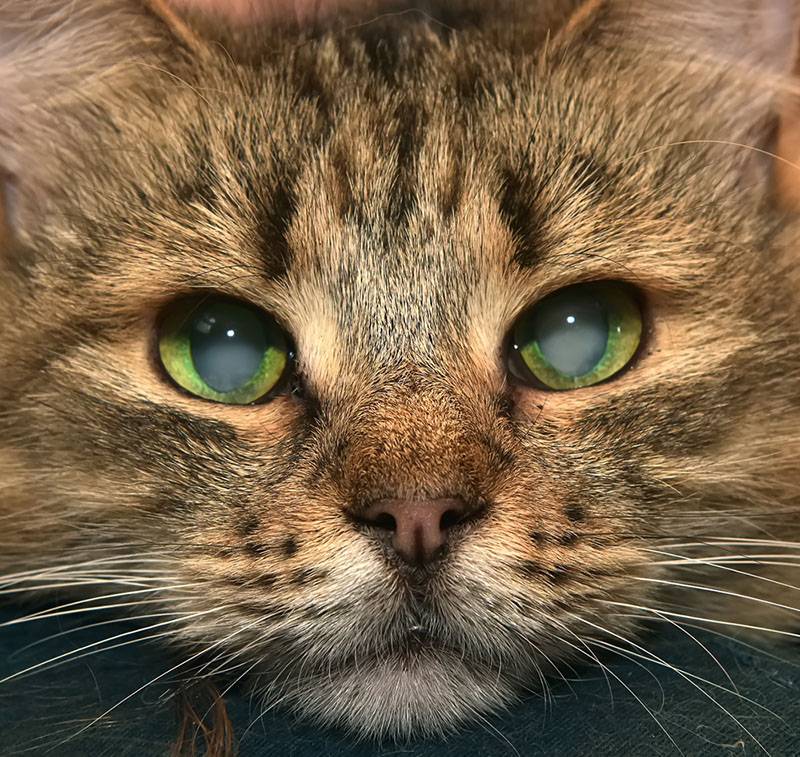
Symptoms of a cataract:
Lethargy, apathy, refusal to exercise – because of poor eyesight, the cat does not want to play and move around. It can crash or bump into pieces of furniture.
On the surface of the eye, the owners notice a film or cloudy spot.
Loss of orientation of the animal in space.
Absence of
tapetal reflexReflection of eyes of different colors in the dark in cats. Cats have a kind of reflective plate located under the retina – the tapetum. It can be of different colors depending on the color of the cat’s eyes. With the tapetum, cats can see perfectly in the dark. When the lens becomes cloudy, the tapetum ceases to reflect light in the dark.
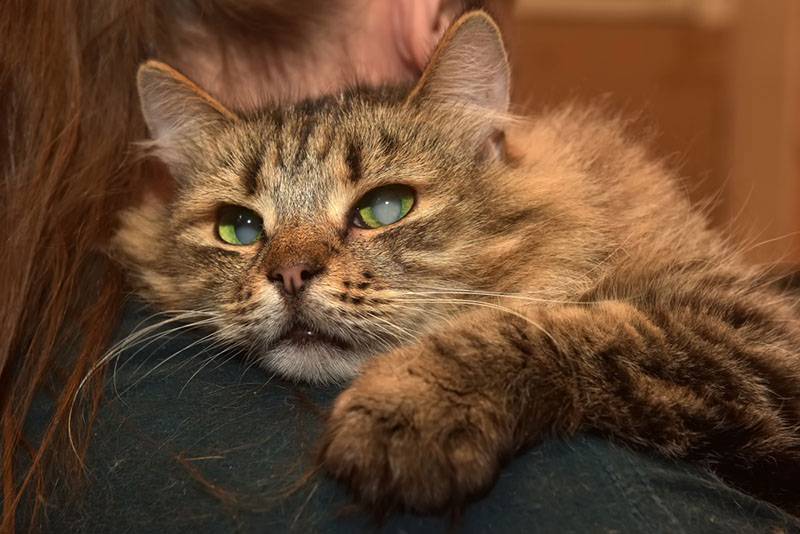
Cataract diagnostics
A general practitioner can make a diagnosis of a cataract during an examination using ophthalmoscopy in a dark room. Further, the patient should be led by an ophthalmologist in order to fully examine the organ of vision for the presence of concomitant pathologies, to assess in detail the degree of inflammation and make a decision on treatment.
Ophthalmic appointments typically include biomicroscopy, ultrasound of the eyeball, red/blue pupillary response, and
electroretinographyMethod for studying the functional state of the retina.
Biomicroscopy – diagnostics of tissues and structures of the eyeball using a slit lamp. Allows you to assess the degree of clouding of the lens, to identify the presence of inflammation in the eyeball.
Ultrasound of the eyeball allows you to exclude hemorrhages, swelling, neoplasms, foreign objects in the eyeball.
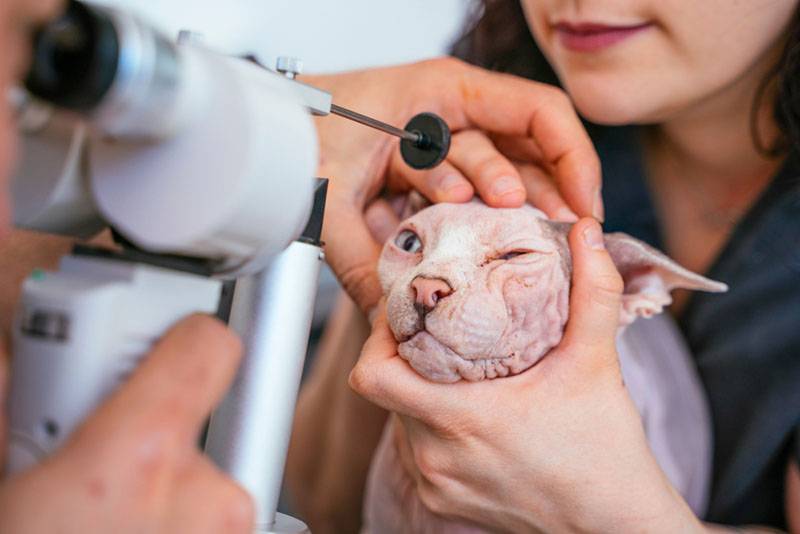
Checking the pupillary reaction to red / blue colors allows you to judge the degree of damage to the visual function of the eye. The pupillary reflex is a complex complex of light perception by a part of the eye – the retina – and the transmission of information along the nerves to the brain. The retina contains photoreceptors – rods and cones. This is a layer of light-sensitive cells, the function of which is to perceive and transform information. Red light shows how well the photoreceptors work, blue color indicates the presence of involvement in the pathological process of the optic nerve and brain. The study is carried out using a small device.
Electroretinography is an ophthalmological examination that allows you to assess the condition of the retina. This study requires preparation – normalization of eye pressure, if it was previously increased, a starvation diet for 4-6 hours, water restriction for 1-2 hours. In some cases, if the animal is very stressed and behaves restlessly, light
sedationReducing irritability or agitation by administering sedatives. This study is indicated for partial or complete loss of vision.
It is important to understand that each case of cataract in cats is individual. Other ophthalmic diagnostic methods may be required if this is a difficult case and other diagnoses need to be ruled out.
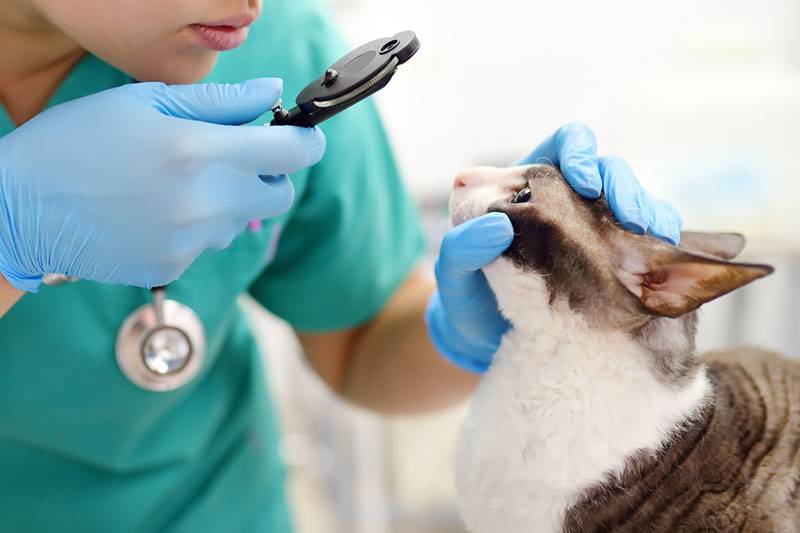
Cataract Treatment in Cats
Unfortunately, the treatment of cataracts comes down to surgery. There are two types of operation:
Phacoemulsification is a microsurgical method of cataract removal using special ophthalmic equipment using an operating microscope. The essence of the method is to crush the lens using ultrasound, extract the resulting fragments and install an artificial lens designed specifically for animals. This method allows you to save your pet’s vision.
In some cases, you can not install an artificial lens. Vision is also restored, but not 100%.
Eyeball prosthetics – the removal of one’s own eyeball and the installation of an artificial one. In this case, vision is not preserved. But this type of operation prevents the inflammatory process in the eyeball, which can cause cataracts.
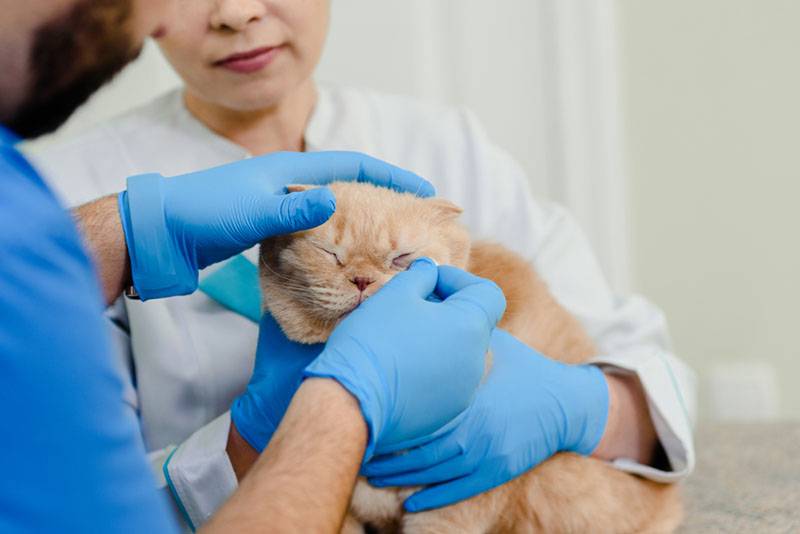
Before the operation, it is necessary to undergo preoperative examinations:
Pass a clinical blood test (starvation diet 8-12 hours before the proposed procedure) – to exclude systemic inflammation of an acute or chronic nature;
Pass a biochemical blood test (starvation diet 8-12 hours before the proposed procedure) – check the condition of the internal organs – the liver, kidneys;
Undergo a cardiological examination of the heart – to assess the risks of surgery from the cardiovascular system.
Sometimes with cataracts in cats, additional drugs may be prescribed to treat the inflammatory process, if any, or to treat the underlying disease.
In the treatment of the inflammatory process, glucocorticosteroids (Prednisolone) are prescribed.
Be sure to control intraocular pressure. With its increase, eye drops are prescribed, which include non-steroidal anti-inflammatory drugs – Diclo-F, Naklof, Indocollir.
Medical treatment is considered ineffective. It is possible only at an early stage, when a cataract is an accidental finding at an ophthalmologist’s appointment. In animals at this stage, as a rule, symptoms are not obvious to the owners, and vision is completely preserved. This treatment aims to improve
trophicNutrition of cells and non-cellular elements and restoration of oxidative processes of the lens. Assign eye drops Quinax, Katahrom, Vasomitin.
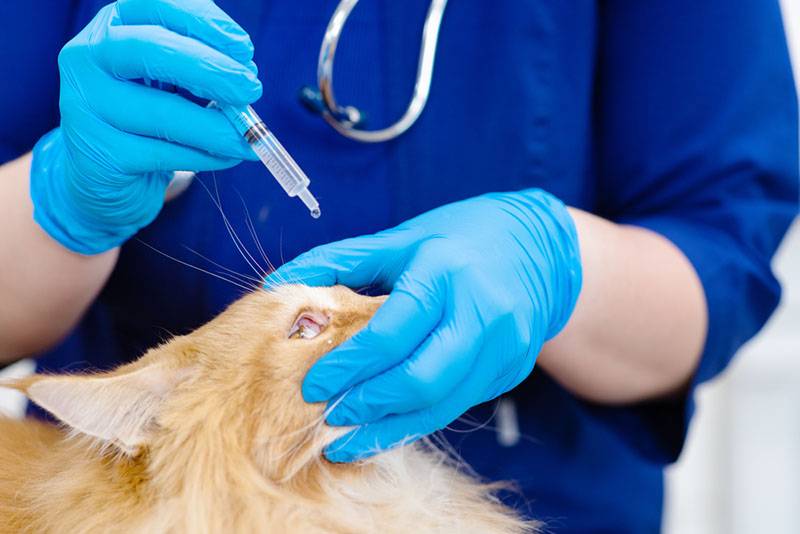
disease prevention
Cataract prevention comes down to good housing conditions and a balanced diet. Avoid injury to your pet.
It is also worthwhile to conduct an annual medical examination for cats older than 5 years: taking blood tests, including hormones, conducting glucometry and ultrasound of the abdominal cavity. When identifying diseases that can cause cataracts, you need to undergo an examination by an ophthalmologist.
Timely contact with a veterinary clinic is the best prevention of disease and complications.
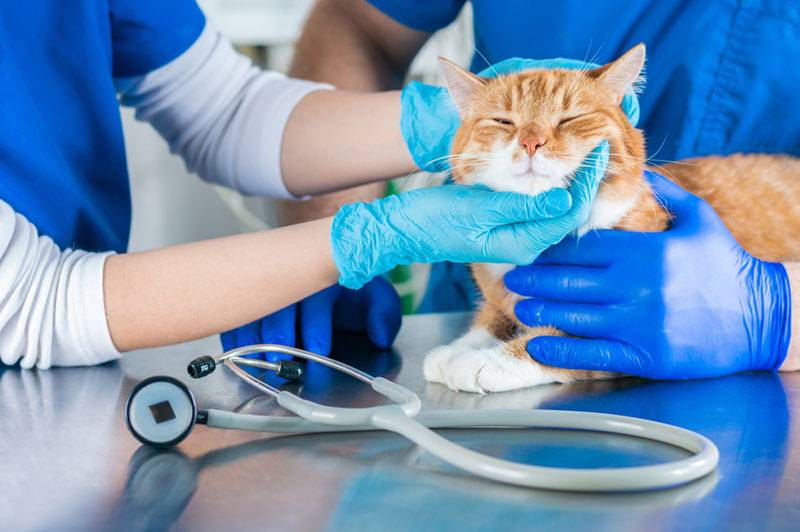
Home
Cataract is a disease of the organ of vision, due to which the lens becomes cloudy.
It is dangerous with partial or complete blindness.
There are many reasons for the appearance of cataracts. The most common is eye injury.
The main symptom is cloudy eyes. Other symptoms include: apathy, unwillingness to move, disorientation in space.

To make a diagnosis, it is enough to conduct an ophthalmoscopy to a general practitioner. Further diagnostics should be carried out by an ophthalmologist, depending on the stage of the disease and comorbidities.
Medical treatment of cataracts is ineffective in veterinary medicine. Cataract treatment is a surgical operation.
Prevention of cataracts – good living conditions, balanced feeding, proper drinking regimen and water quality. With additional diseases (urolithiasis, diabetes mellitus), it is worth undergoing an ophthalmological examination once a year.
Answers to frequently asked questions
Sources:
Riis R.K. “Ophthalmology of small domestic animals”, Aquarium-Print, 2006, 280 pages.
David J. Maggs, Paul E. Miller «RonOfriSlatter’s Fundamentals of Veterinary Ophthalmology», 5th Edition, Saunders, 2012, 520 pages



